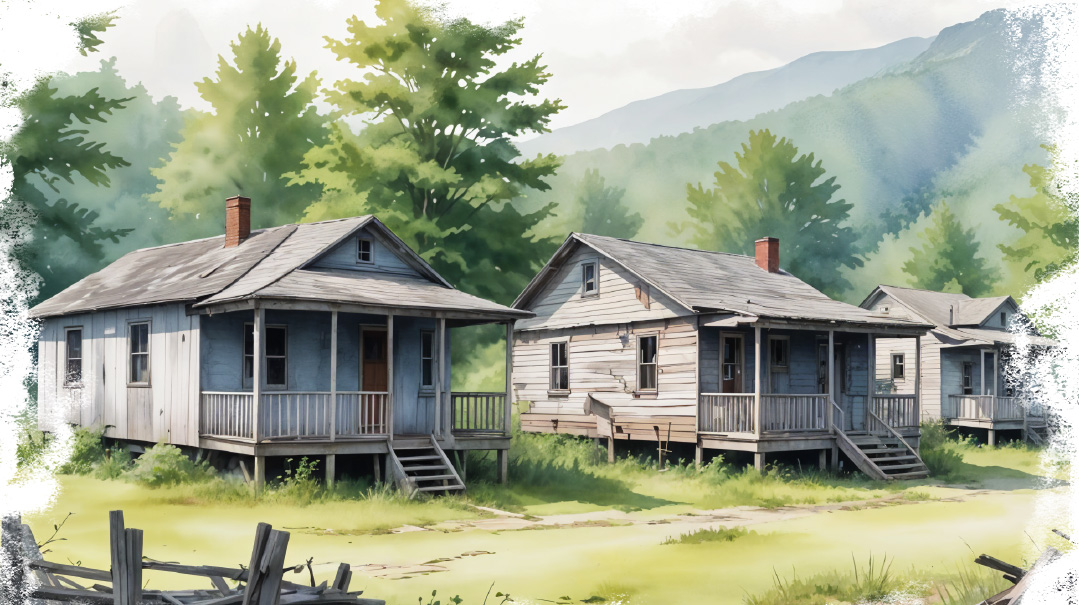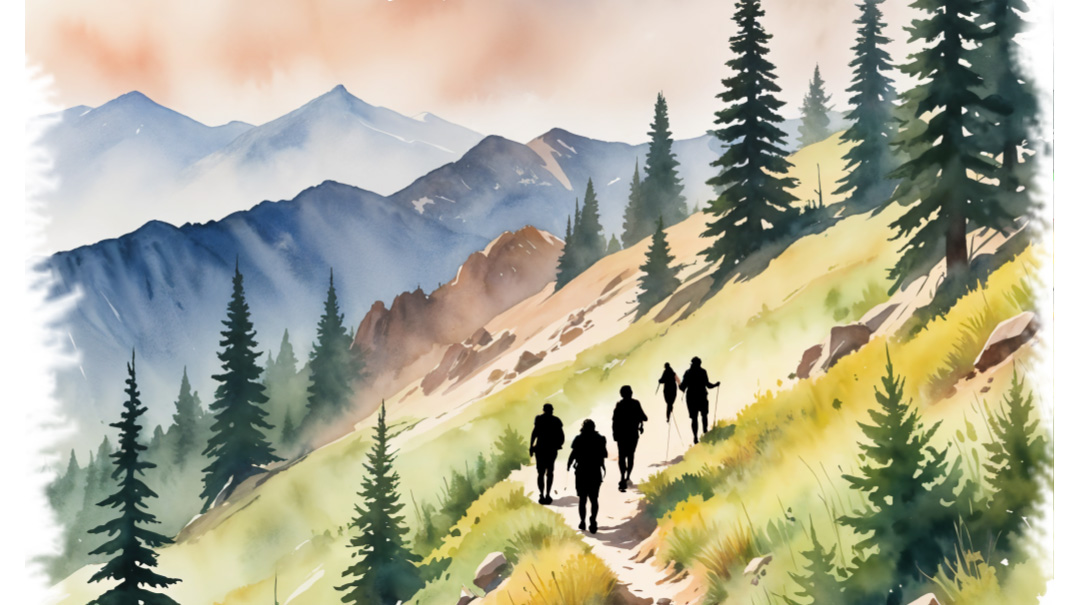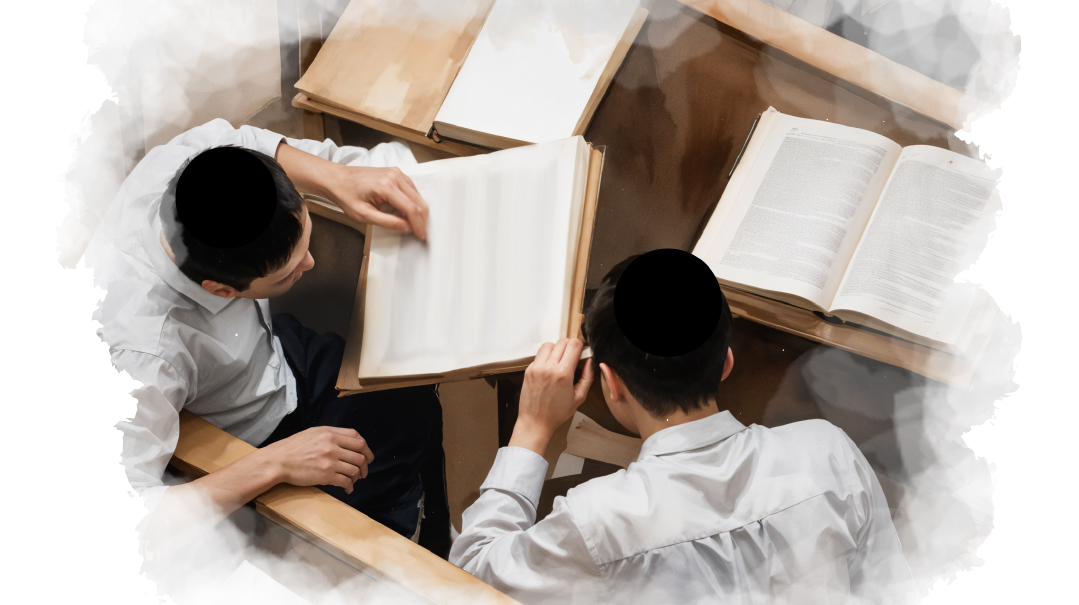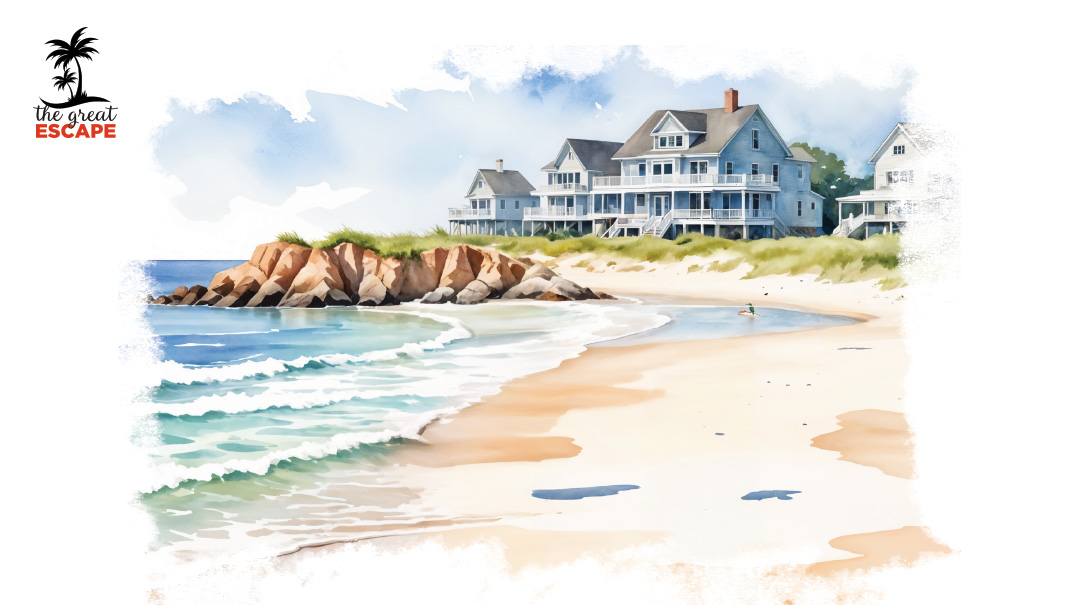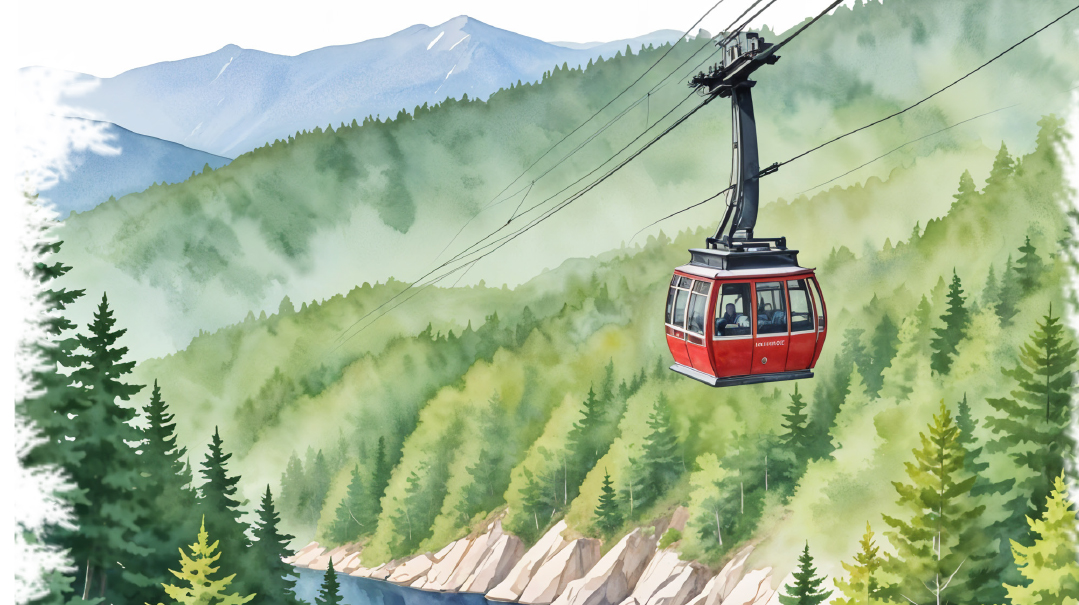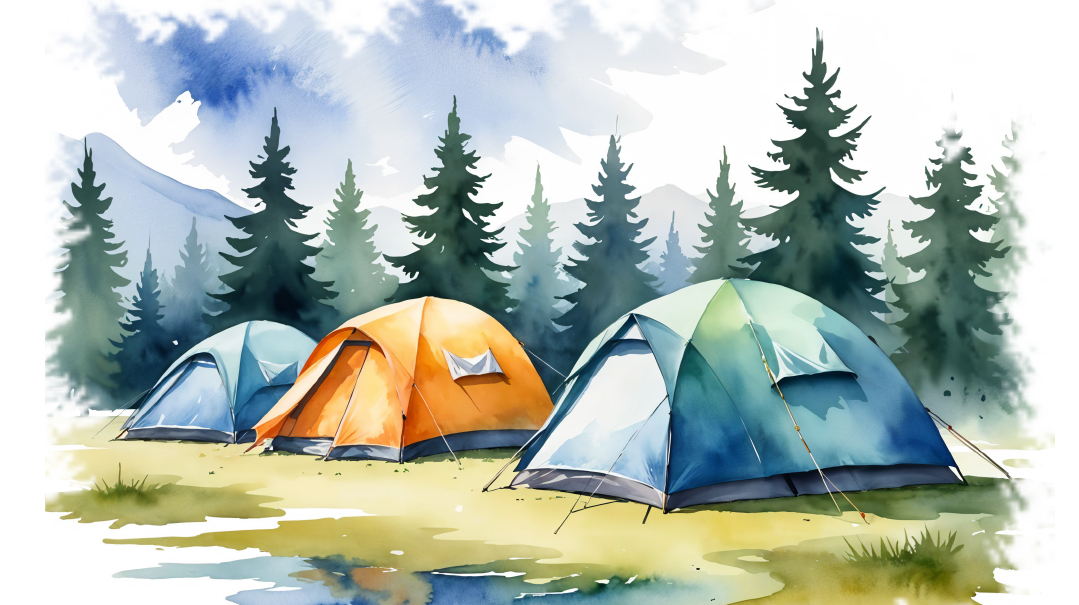Heart to the East
| August 6, 2024There was one phone in the entire village, a payphone in a wood shed in the middle of a cornfield
My mom’s dream to take our whole family to the Holy Land wasn’t your typical vacation back then, but while the chicken coops and orange orchards of Ramatayim have morphed into the villas of upscale Hod Hasharon, and my wife and I now stay in our Jerusalem apartment, my teenage heart opened under those fragrant trees
Location: Eretz Yisrael
Years: 1964
I peered through the barbed wire fence, trying to catch a glimpse of the Kosel and the Temple Mount on Tishah B’Av day. Because the Old City was in Jordanian hands, you could go only as far as Migdal David, where you could attempt to see the area of the Beis Hamikdash from a distance through the barbed wire.
In Baltimore we spend a lot of time on Tishah B’Av saying Kinnos, I thought, comparing my experience of the sad, somber day in my hometown with this year’s in the Holy Land. In Baltimore we fasted, we davened, and yes, of course I felt sad, but the Churban felt distant, an event of long-ago history.
Here, I’m not far from where the Beis Hamikdash stood, but I can’t even see the outer wall properly.
Tears sprang to my eyes: In that moment, I felt a deep longing and raw emotional anguish for the makom haMikdash. On that Tishah B’Av, I was a Jew mourning the Churban.
We were in Israel for an entire month that summer, the realization of my mom’s dream for our family to visit together. It was her first time in the Holy Land, and a long time coming, because it was expensive to fly the four of us across the Atlantic Ocean and difficult for my dad to take off so much time from his business. But once Mom decided this was a goal, she methodically kept to her plan, setting aside a few dollars every month in our special Israel trip account. It took 14 years to save enough for us to travel to Israel for an extended stay, during which we would see relatives my mother hadn’t seen in 25 years, since before the war.
I was 14 when we finally boarded an El Al plane (a Boeing 707, if I recall correctly) out of New York, along with about 140 other passengers. Some 13 or 14 hours later, we landed in a tiny airfield called Lod with a crackly “Hatikvah” playing on the plane’s loudspeaker. Tears streamed down Mom’s face.
We bent to kiss the holy ground after we deplaned. Out of the corner of my eye, I noticed young boys and girls in military garb carrying Uzi machine guns, protecting the country, its residents, and us tourists. (I couldn’t help but remember Dad’s oft-shared story of when he took a boat from Germany to Haifa Port in 1937. Back then, traveling from Tel Aviv to Jerusalem was a treacherous journey, with Arab snipers shooting at the caravans of cars and trucks making their way to the Holy City. In fact, when Dad took a sheirut to Jerusalem, he sat in the front seat until an elderly gentleman boarded and requested that seat. Dad gave it up — and on the way to Jerusalem the gentleman sitting in that front seat was shot by a sniper.)
Cousin Leo Goldschmidt, who came to greet us, had arranged for a tiny taxi to pick us up. The driver strapped a few of our cases to the roof, and we squeezed in, traveling from Lod on narrow roads through agricultural areas and on through Petach Tikvah as we made our way to Ramatayim, where much of Mom’s family lived.
R
amatayim was a quaint Israeli moshav with tiny, orange-roofed stone houses. Our cousin Leo and his wife Lies lived in an area called Shikun Hapoalim, a neighborhood of workers. Outside of his home stood the chicken coops, where Leo, who worked for Israel’s social security system, raised chickens and sold the eggs for extra money. Pecan trees grew at the back of his property, and beyond that, fruit orchards.
We stayed across the dirt road from Cousins Leo and Lies in a small, comfortable home with a pomegranate tree right outside the front door. Cousins Sarah and Arthur lived down the street in a tiny house with a huge palm tree in front. Arthur owned a plant shop on the main street, but he was not well and needed medical care, and Sarah washed clothing for extra money.
On our corner, a small makolet sold fruit, vegetables, dairy products, bread, cookies, and snacks. They sold fresh fish as well, and I mean fresh, since once you chose your fish from the ones swimming in a bucket of water, the storekeeper bopped it on the head and wrapped it in newspaper. There you had your fresh fish!
There was one phone in the entire village, a payphone in a wood shed in the middle of a cornfield. It took asimonim (phone tokens), but why you needed a phone was beyond me. Who could you call? Nobody had a phone!
For my older sister Aviva and me, Ramatayim was a different world than Baltimore, a typical metropolitan city with lots of traffic, noise, and an unpleasant air quality. But Shikun Hapoalim had one car, an antique Model T Ford with side runners and a crank in front to start the motor. The first time my father and I went to shul in the early morning, we hitched a ride with that car. The next morning, we took a hitch of a different sort: a milk wagon with unrefrigerated milk in bottles, that was hitched to a donkey. We sat in the wagon for the 20-minute ride to shul. Then I found two rusty old bicycles. I painted and oiled them and fixed the tires, and my dad and I had reliable transportation to and from shul every weekday.
The shul was large, with a potpourri of Ashkenazi, Sephardi, Yemenite, and European Jews. Very few were shomer Shabbos, but the rav was a Klausenburger chassid and a big talmid chacham, and when he heard we were from Baltimore, he spoke highly of Rabbi Nathan Drazin, a Baltimore rav he had befriended.
The other shul in town was a yekkish Shabbos and Yom Tov minyan that gathered in a small wooden shed. It was comprised of 10 or 12 German Jews, most of them farmers with egg-laying chicken farms. The baal korei was our Uncle Moses, the family patriarch, Cousin Leo’s father. He was well into his eighties then, an imposing German-speaking figure who chopped wood with an ax until he was 99 years old (he would live to 102). The entire family took great care of Uncle Moses, tending to all of his needs, and even though he was frum and his Ivrit-speaking children in Ramatayim were not, they kept strict kashrus for him.
Uncle Moses was practically blind, so as a baal korei he either “read” much by heart or his leining was a miracle. (It was clearly a halachic issue, but as Uncle Moses was the only baal korei, no one would challenge his role in that shul.) We were there for Shabbos Nachamu, and they gave me maftir, which I did in the German trop. The Yekkehs loved it.
Because there were no cars in Shikun Hapoalim, there was no traffic, and it was quiet, save for the squawking of the chickens. The air was pure and fresh, with wonderful aromas of citrus fruit coming from the orchards. The town saw little rain for months at a time, so there were occasionally high levels of dust from the very dry ground, and an irrigation system watered the growing produce.
Egged buses were the main mode of travel, traversing the main street to take people to Kfar Saba, Petach Tikvah, Tel Aviv, and Raanana. Some of the roads were dirt, not even paved, with locals using bicycles with baskets to shop in the cluster of small stores on the main street. I remember going to the theater there, too, and being surprised to see the floor covered in garinim (sunflower seed shells).
Kashrus in the small town was challenging, because there were few, if any, kosher restaurants, and to purchase a kosher prepared chicken, you had to take a one-hour bus ride to Tel Aviv.
The State of Israel was only 16 years old at the time of our summer stay. It was a new nation, one just beginning to construct the infrastructure of the land, but to us it was a third-world country. Even Tel Aviv and Haifa, which were more modern than the rest of the country, were years behind in building and technology. I was amused that we brought gifts of transistor radios and small tape recorders, which were extremely expensive and hard to get in Israel, and that other prized gifts were Parker pens and American or European clothing, especially jeans — the Israelis really liked them.
It also struck us as strange that many Israelis weren’t keeping Shabbos. I still remember the culture shock of hearing people who weren’t frum speaking Hebrew, especially one Friday night, when our cousins told us they were taking us to an oneg Shabbos, and we arrived at an event of Hashomer Hatzair (we had no idea what the secular Jewish youth movement was) where there was live music.
F
rom our rental home in Ramatayim, we traveled around Eretz Yisrael. Jerusalem, of course, where I vividly remember my father taking me to daven Minchah at the Yeshurun Shul, and where we also toured Shaare Zedek Hospital, which in those days was on Jaffa Road near the Machaneh Yehudah shuk. Schvester Selma, the famous former head nurse of German origin, led us through the crowded and busy halls of the hospital, where due to lack of space, patients were lying on stretchers in the corridors. Shaare Zedek gave incredible love and care, but back then it was poor — underequipped, understaffed, and housed in pretty rough quarters.
In Rechavia, we went to what we thought was a kosher fish restaurant — but when the menu came to our table, we were shocked to see shrimp! We left in a hurry, and instead I experienced my first falafel, hummus, and techinah, of which I became an instant fan.
My favorite beverage, I remember, was mitz eshkoliot, grapefruit juice. Mayonnaise came in a toothpaste tube, and I ate new fruits like kumquats and dates; Shivas Haminim in Israel is a different experience.
We were in the food business in America, importing food from all over the world, and we sold a lot of chocolate, so my dad visited the Elite chocolate company (we always tried to purchase whatever we could from Israel).
We stopped in Tel Aviv and Haifa before heading to Tzfas, basically an artists’ colony where artists lived and sold their work to visitors who came to the local cemetery. From Tzfas we went to Teveria, where we boated in the Kinneret, and then to the Galil.
Along the way, we went into an ancient shul with three entrances: one for Kohanim, one for Leviim, and one Yisraelim.
Later, we ventured south to Be’er Sheva, Masada, Ein Gedi, and the Dead Sea, traveling a long road with few sites through the Judean Hills, a landscape of reddish mountains, stretches of desert, and herds of sheep crossing the road. Bedouin tents dotted the area. We continued down to Eilat, a long ride to a beach that was all sand, with a glass-bottom boat for tourists. Back then, there were not many buildings.
As we made our way through the desert, I looked around; I could imagine Am Yisrael wandering in the Midbar for forty years before entering this very land.
T
oday, the chicken coops, orange orchards, and cornfields of Ramatayim have become the villas of Hod Hasharon, an exclusive, upscale suburb. Israel has emerged over the last 60 years as an economically sound world leader in technology and medical advances. Yeshivos and limud haTorah abound, and a network of chesed organizations blanket the country.
Today, when my wife and I stay at our apartment in Yerushalayim, I remember our family trip decades ago: how Mom, who had never stepped foot on the holy soil, worked so hard to bring us here, how Uncle Moses, who stayed frum even as his children strayed, clung fast to the mesorah, how Cousins Leo and Lies and Sarah and Arthur, who struggled to settle the land and make ends meet, formed the backdrop to my Israel summer, and how I, a 14-year-old city kid from Baltimore, discovered who I am, where we come from, and what my People have endured. I discovered my heart in my homeland.
Eli W. Schlossberg is president of Castle Consulting Group, specializing in kosher and specialty food distribution in the US and Israel. He has authored two books, The World of Orthodox Judaism (Jason Aronson, 1995) and My Shtetl Baltimore (Targum Press, 2017).
(Originally featured in Mishpacha, Issue 1023)
Oops! We could not locate your form.

